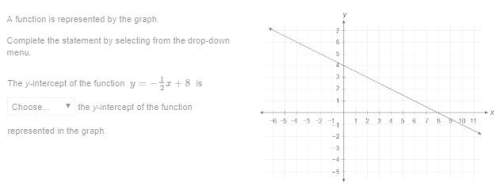
Mathematics, 21.05.2020 23:17 Walkman2092
Which statement explains why △ABC is congruent to △A′B′C′? You can map △ABC onto △A′B′C′ by reflecting it over the y-axis and translating it 4 units down, which is a sequence of rigid motions. You can map △ABC onto △A′B′C′ by reflecting it over the x-axis and translating it 7 units right, which is a sequence of rigid motions. You can map △ABC onto △A′B′C′ by reflecting it over line y = x and translating it 5 units right, which is a sequence of rigid motions. You can map △ABC onto △A′B′C′ by rotating it 90° clockwise about the origin and translating it 5 units right, which is a sequence of rigid motions.

Answers: 1


Other questions on the subject: Mathematics

Mathematics, 21.06.2019 22:40, winterblanco
Use this graph to find the cost of 6 show tickets
Answers: 1

Mathematics, 21.06.2019 23:30, ivan2076
On this question. a hypothermia occurs when a person's body temperature drops below 95 degrees fahrenheit. write and solve an inequality that describes how much lower the body temperature of a person with hypothermia will be than the body temperature of a person with a normal temperature of 98.6 degrees fahrenheit
Answers: 1

Mathematics, 22.06.2019 00:30, selemontaddesep6bv1p
You borrow $25,000 to buy a boat. the simple interest rate is 4%. you pay the loan off after 10 years. what is the total amount you paid for the loan?
Answers: 1
You know the right answer?
Which statement explains why △ABC is congruent to △A′B′C′? You can map △ABC onto △A′B′C′ by reflecti...
Questions in other subjects:

Social Studies, 28.05.2021 20:50













